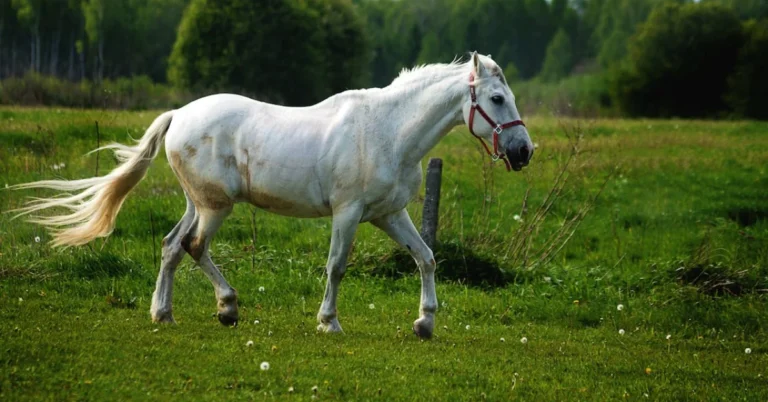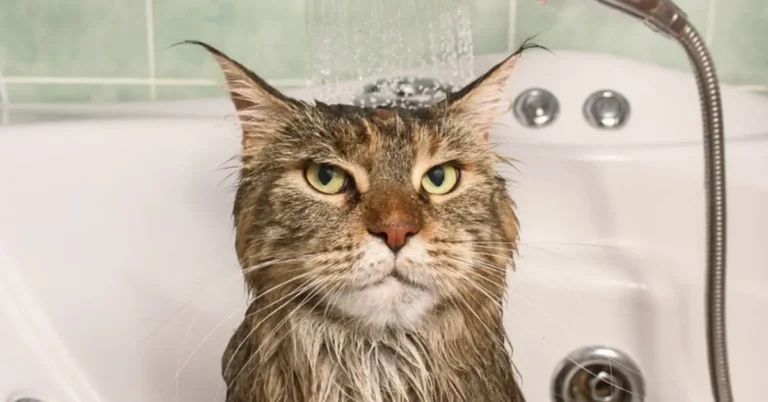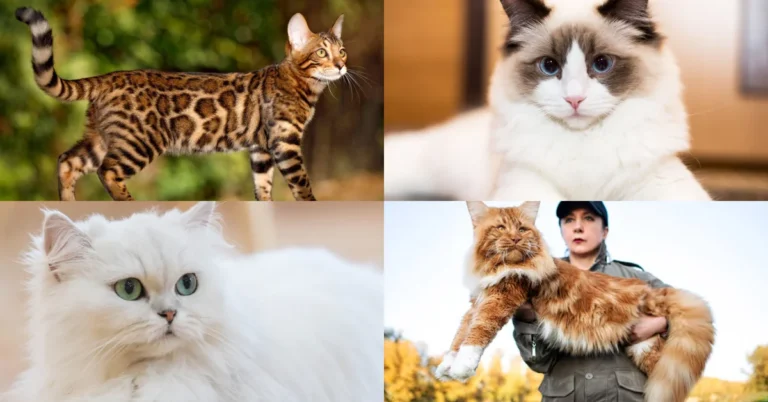Since ancient times, horses have enthralled people with their beauty, speed, strength, and camaraderie. These majestic animals have played vital roles across countless cultures and historical events—from pulling chariots into ancient battles to carrying knights in medieval tournaments to racing across finish lines as enthusiastic crowds roar.
Beyond their significance in mythology, warfare, sport, and labor, horses continue to enter us with their extraordinary abilities and surprising quirks. Their athletic feats on the racetrack demonstrate near-superhero levels of speed and endurance while their emotional sensitivity reveals a soulful nature that forms powerful bonds with humans and herdmates alike.
Delve below the glossy exterior and flowing mane to uncover 10 Fun facts about horses these splendid mammals. You’ll discover their multifaceted communication styles, numerical skills, diverse coat colors, and sleep habits. Marvel at their elite speed and stamina. These fun tidbits will deepen your appreciation for horses as the remarkable, highly intelligent creatures they are.
So saddle up and get ready to explore the captivating world of horses!
1. Master Multitaskers
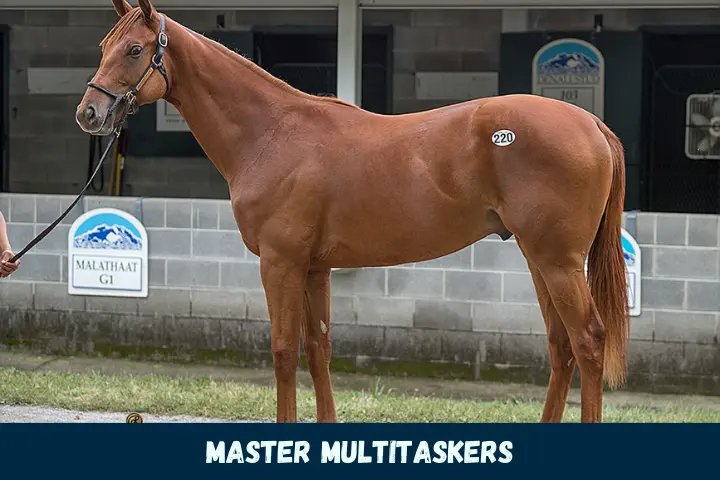
A horse’s face appears gentle and serene thanks to those soft, soulful eyes. But don’t let the calm exterior fool you: horses are master multitaskers! Those ears aren’t just for show. Horses can rotate each ear independently up to 180 degrees, effectively enabling them to listen in two directions at once. Combined with eyes positioned widely on each side of the head for panoramic vision, horses can scan for predators and monitor their surroundings without needing to move their heads. This state of hyperawareness ensures their safety as herd animals that rely on flight as their main defense.
Horses have the largest eyes of any land mammal, allowing them superior peripheral vision. A subtle flick of the ear or swivel of an eye is all it takes for a horse to keep tabs on everything going on around them. Humans have a much smaller range of vision in comparison at around 180 degrees if we’re actively moving both eyes and head. So a horse is effectively taking in double the visual information in their everyday lives!
Further boosting sensory perception, horses have a heightened sense of smell and taste that helps them evaluate food, water, and even other animals. The multipronged upper lip called a “muzzle,” has nerve endings that aid this tactile exploration of the world.
Thanks to these powerful perceptual abilities, horses can scan their environment for threats, observe herd dynamics, find tasty grasses to graze, and go about their day with minimal head movement. Those sneaky horses are monitoring it all!
2. Slumber on Their Feet
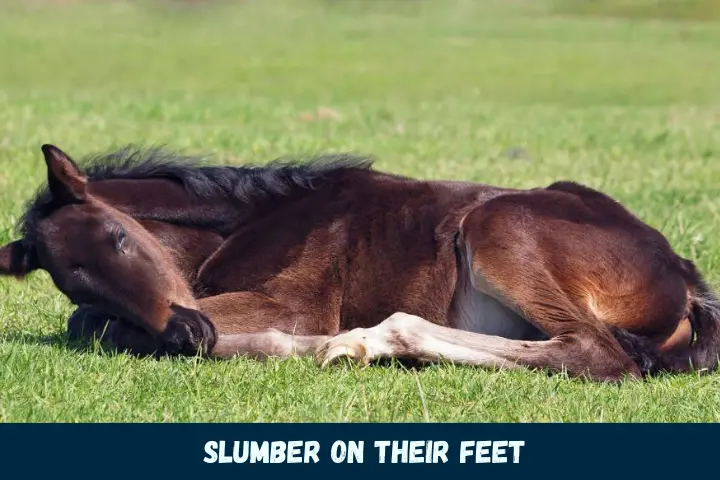
After all that sensory input and monitoring herd activities, horses need to catch some zzz’s just like humans. But you’re unlikely to catch domestic horses stretched out napping in the sunshine or curled up for a cozy snooze. These light sleepers usually doze on their feet instead!
In the wild, sleeping would leave horses vulnerable to predators. So nature equipped them with a handy “stay apparatus” in their legs that allows them to relax while standing. This locking mechanism in the knees and hocks enables horses’ huge bodies to be supported by their skeletal structure without active muscle contraction. Through a series of ligament and tendon adjustments, their joints essentially become locked poles able to bear their weight even as they doze. Like flipping a switch from “active” to “passive” mode.
This standing sleep isn’t incredibly deep or restful though. Domestic horses will still seek opportunities to catch some REM sleep by laying flat out when they feel safe from harm. But for light napping to restore body and mind while remaining ready to flee danger, horses have perfected the art of sleeping on their hooves.
3. Equine Language Skills

Does it sound like your horse is whinnying a sweet song just for your ears? They likely are! Horses have an extensive vocabulary of sounds beyond charming whinnies that allow them to effectively communicate.
Several distinctive whinny “dialects” with regional accents have even been documented among isolated herds. Plus there are specific whinnies mares use just for their foals. Beyond distinctive whinnies, horses can produce a range of other noises like snorts, blows, squeals, and nickers to express different emotions. Flicking ears, tail swishing, foot stamping, and posture shifts add to this rich language.
decoding these vocalizations and body language cues takes dedication, but it allows humans to understand a horse’s experience. Are they excited? Anxious or fearful? Relaxed and happy? Learning to “speak horse” fosters deeper connections.
For example, a gentle rumbling nicker often accompanies a human’s arrival, signaling the horse’s happiness to see them. High-pitched whinnies may convey anxiety or protest while a resonant blow through the nostrils can mean “Get out of my space!” Ears pinned back and hindquarters turned towards a threat completing the message to back off.
Reading these cues allows horse lovers to connect on a deeper level. Just don’t expect perfectly fluent conversations…neigh chance! But even without words, communicating emotion and intent is powerful.
4. Equine Math Whizzes

Regal and poised with flowing manes and glossy coats, horses exude an air of dignified wisdom. But did you know they have some surprising thinking skills too? Turns out horses are talented in math!
Multiple studies have demonstrated that horses can recognize quantities and perform basic arithmetic like addition and subtraction. When shown two piles of treats that were then obscured, horses could judge if tokens were added or removed from the piles. Not only that, they could perform this cognitive math by applying it to counting and comparing discrete items.
In one study, horses were initially presented with two visible sets of objects that were then hidden from view. More objects were secretly added or removed from the sets the horse could no longer see. But the horses could still accurately judge if the hidden quantities had increased or decreased based on what they had originally observed.
Pretty impressive considering most toddlers are just gaining similar skills to visually track objects and develop numerical understanding! While horse math probably doesn’t rival advanced human arithmetic, it does provide a glimpse into their cognitive capabilities beyond speed, power, and beauty.
5. Palettes With Preferences
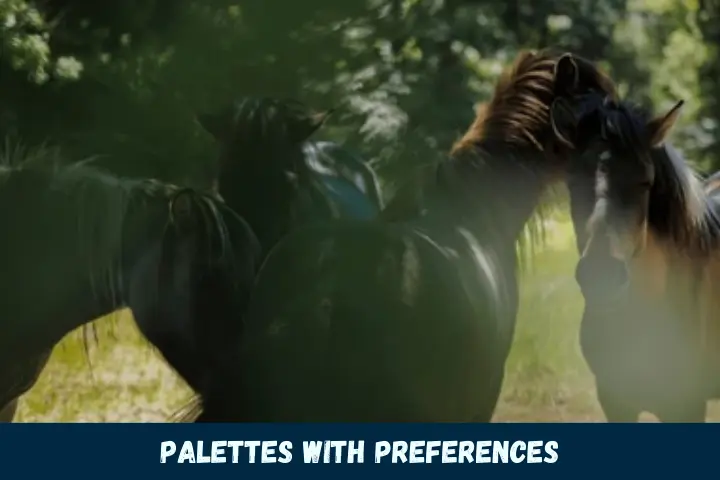
Horses aren’t just machines mowing mindlessly through grass all day. They have quite defined taste preferences! Those sizable muzzles contain more taste buds than an average human tongue. This anatomical adaptation allows horses to sort through vegetation and select favorite sweet grasses while avoiding toxic or bitter plants.
In addition to sweet grasses, horses tend to enjoy salty and sour flavors over bitter. Fruits like apples, pears, grapes, and oranges are usually a big hit thanks to their sweet taste and juicy crunch. Some horses even display an endearing fondness for peppermints or licorice candies!
On the other hand, horses generally dislike bitter or acidic flavors. So they’re probably not big fans of black coffee or grapefruit. Through trial and error learning, they build scent and taste associations that steer them towards enjoyable feed and away from disagreeable plants.
It’s no wonder so many myths feature horses craving sugar cubes or children bribing them with sweet apple treats for friendship! Their evolved taste and scent receptors are guiding them to opt for high-calorie foods that are safe to eat whenever available.
6. Buddies and Bonds
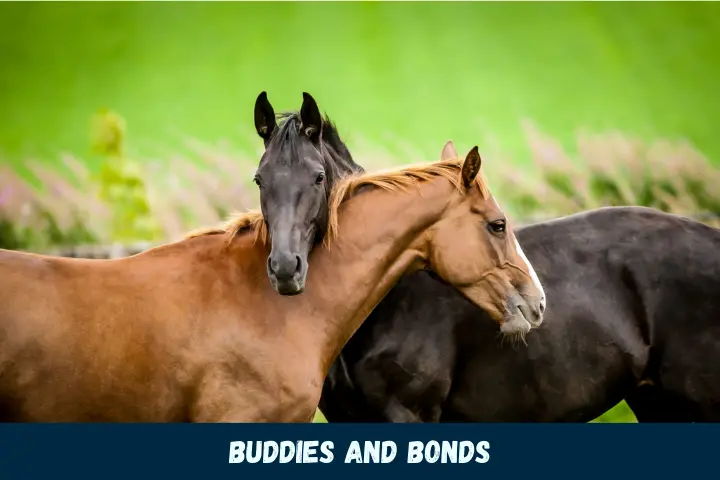
Contrary to the stereotype of the lone ranger galloping across open plains or desolate mountain trails, horses are extremely social herd animals. They thrive on close relationships and interaction with other horses.
In the wild, horses will form tightly bonded family groups known as “harems” consisting of a lead mare, her daughters, and their offspring. These groups cooperate to raise foals and ensure her safety. When a family group gets too large with multiple foal crops from different generations, the lead mare may split off with her direct offspring into a new smaller harem, leaving aunts or elder daughters in charge of the established herd.
Within the herd, fascinating social dynamics unfold. Complex hierarchies emerge as horses negotiate their places in the herd pecking order. Expressive dominance behavior and submissive gestures help avoid outright conflict when establishing rank.
Gentle nickering and mutual grooming build affectionate bonds. Playful kicking, bucking, and running solidify friendships. Herd members offer babysitting duties for each others’ foals and support elderly or injured horses. Mares even sometimes form deep attachments and choose to remain paired for life!
Given such a strong herd instinct, domestic horses isolated from other equine companies often bond very closely with human caretakers. That velvety muzzle nudging your palm or playful head tossing isn’t just asking for treats – it’s your horse saying “You’re my trusted friend!” Their incredibly social nature allows for interspecies best-friend status.
7. Coat Colors Galore!
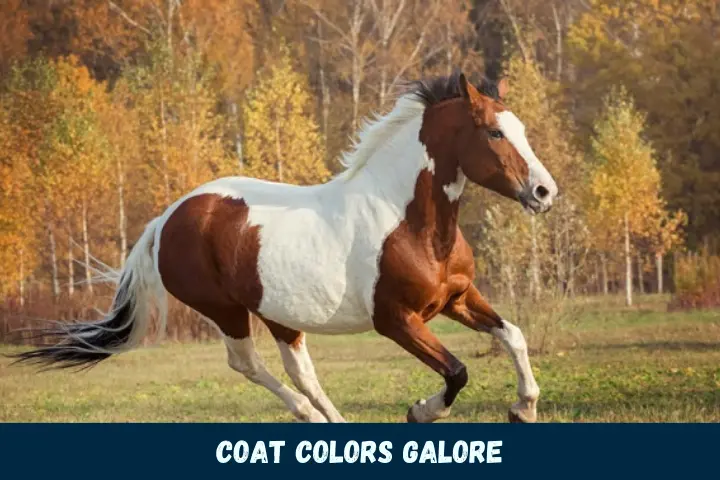
At first glance, horses seem limited to familiar black, brown, grey, reddish, or creamy shades. But hidden diversity lurks beneath those glossy exteriors!
The basic chestnut, bay, or grey that springs to mind represents just a fraction of the spectacular coat varieties possible through slight genetic variations. As horse ancestors adapted to different climates and environments over millennia, vibrant
8. Blazing Fast
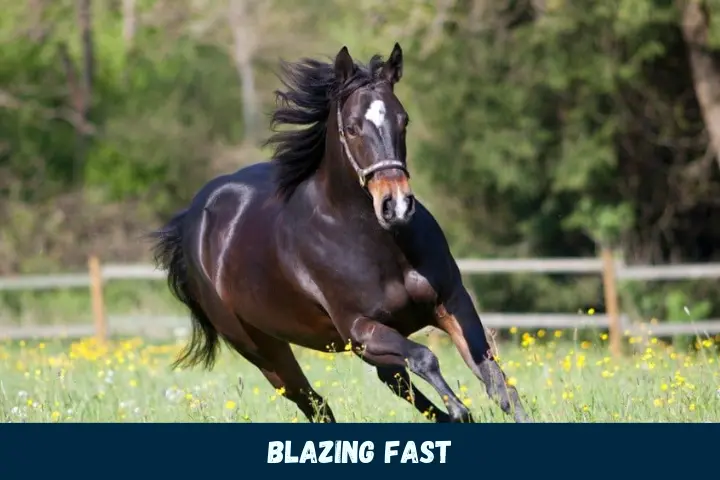
Watch a horse gallop across a field or barrel down a racetrack and you’ll witness raw athleticism in action. Their muscular hindquarters propel them forward with astounding speed, devouring ground in vast strides. But just how swift are these hooved rockets?
Racehorses provide the best examples of horses pushed to their speed limits. These elite equine athletes are specially bred for endurance, power, and blazing acceleration. Thoroughbreds dominate horse racing with their long limbs, deep chests, and supercharged hearts and lungs supplying oxygen even during all-out runs. At top speeds, their hooves flash wildly as they surpass 40 miles per hour or 64 kilometers per hour. That’s nearly as fast as elephants and faster horse than most cars drive on city streets!
No surprise that horses have long been revered for their speed and stamina whether racing or pursuing prey across open grasslands centuries ago. But it’s easy to overlook their continued athleticism today. Modern horses can still activate their inner racehorse. Pastured companion horses buck and gallop joyously when playing together. Wild herds run just for the exhilaration of sprinting.
See a horse crouch and take off in an open field, reveling in simply running at full tilt. No racetrack or finish line is required to experience their natural love of speed. Momentarily you’ll catch a visceral glimpse at the powerful, ultra-athletic runners these four-legged wonders still are at heart.
9. Always Learning
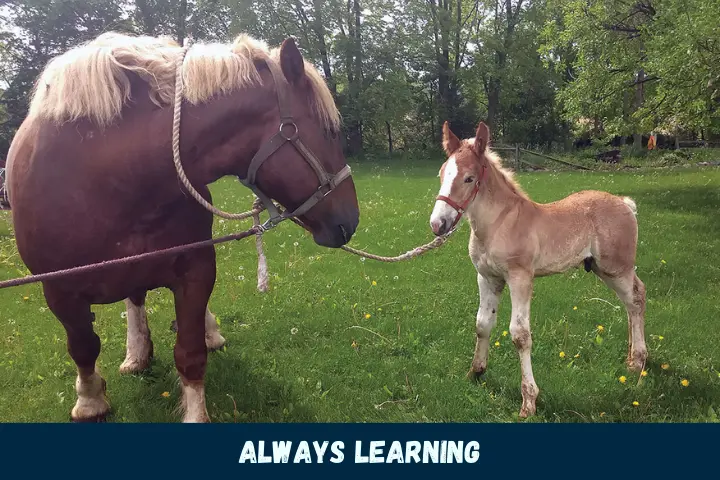
Traditionally horses were considered more stubborn beasts of burden than brilliant scholars. However modern research continues unveiling horses’ capacity for learning, emotional expressiveness, and comprehension of human cues. That sensitivity and willingness to cooperate have enabled horses to partner with humans across thousands of years assisting with hunting, transportation, farming, and battle.
Domesticated horses easily learn to respond appropriately to basic commands like walk, trot, canter, or whoa. With dedicated horse training, their natural athleticism and agility can be honed to master complex skills from jumping courses of obstacles to intricate dressage moves like pirouettes or passage.
Seeing-eye horses guide vision-impaired individuals safely while therapeutic riding horses provide physical and emotional support to children or veterans overcoming health challenges. Carefully bred and rigorously trained police horses control crowds by understanding exactly where their human partners wish them to move in response to subtle cues.
Recent studies reveal that beyond physical responses, horses actively try to achieve positive outcomes for themselves and their human handlers by accurately interpreting human intent through sound, sight, touch, and memory over time.
This research continues expanding knowledge of how horses think, feel, and learn in partnership with humans. And the more we understand about equine cognition, the more incredible horses become. Their learning abilities plus emotional sensitivity cement them not only as loyal helpers to humankind but also as astute, caring companions.
10. Self Awareness Surprise
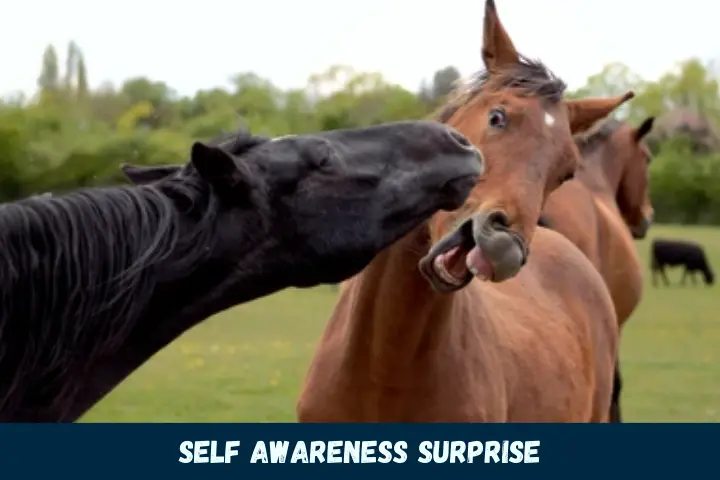
Gazing into a horse’s dark liquid eye, it’s easy to imagine a soulful yet unknowable intelligence residing inside. But did you know horses recognize their reflections? This capacity for self-awareness may reveal deeper aspects of horses’ inner experience.
When presented with a mirror, horses exhibit curiosity about their reflections. They sniff the mirror and watch their image attentively, repeatedly gazing from their own body to the reflection before them. When they move their head and observe their mirror counterpart moving simultaneously, they recognize the relationship between their physical experience of their body and the visual representation.
Such self-directed behaviors prompted by mirrors demonstrate an awareness of “self” that links their inner experience of being a horse with the physical reality of other animals like great apes and dolphins.
Final Thoughts
What could horses be thinking when they lock eyes with their reflections? We can only speculate. But this cognitive capacity hints at intriguing questions about how horses regard their existence. There may be more self-contemplation occurring behind those long-lashed eyes than we humans have ever comprehended.
Understanding horses as self-aware takes human-horse relationships to profound new depths. Gazing into your horses’ eyes, imagine what rich perceptions they hold of their world, their relationships, and perhaps even their own equine identities. This science-verified self-awareness reveals horses relating to their environment much as we do – as thinking, feeling individuals experiencing existence.
Next time you groom, ride, or simply spend time with horses, pause to truly look into their eyes. As you connect with them, know that they are also connecting with you. And within the depths of their consciousness, they likely connect with themselves too, self-aware in all their equine glory.


